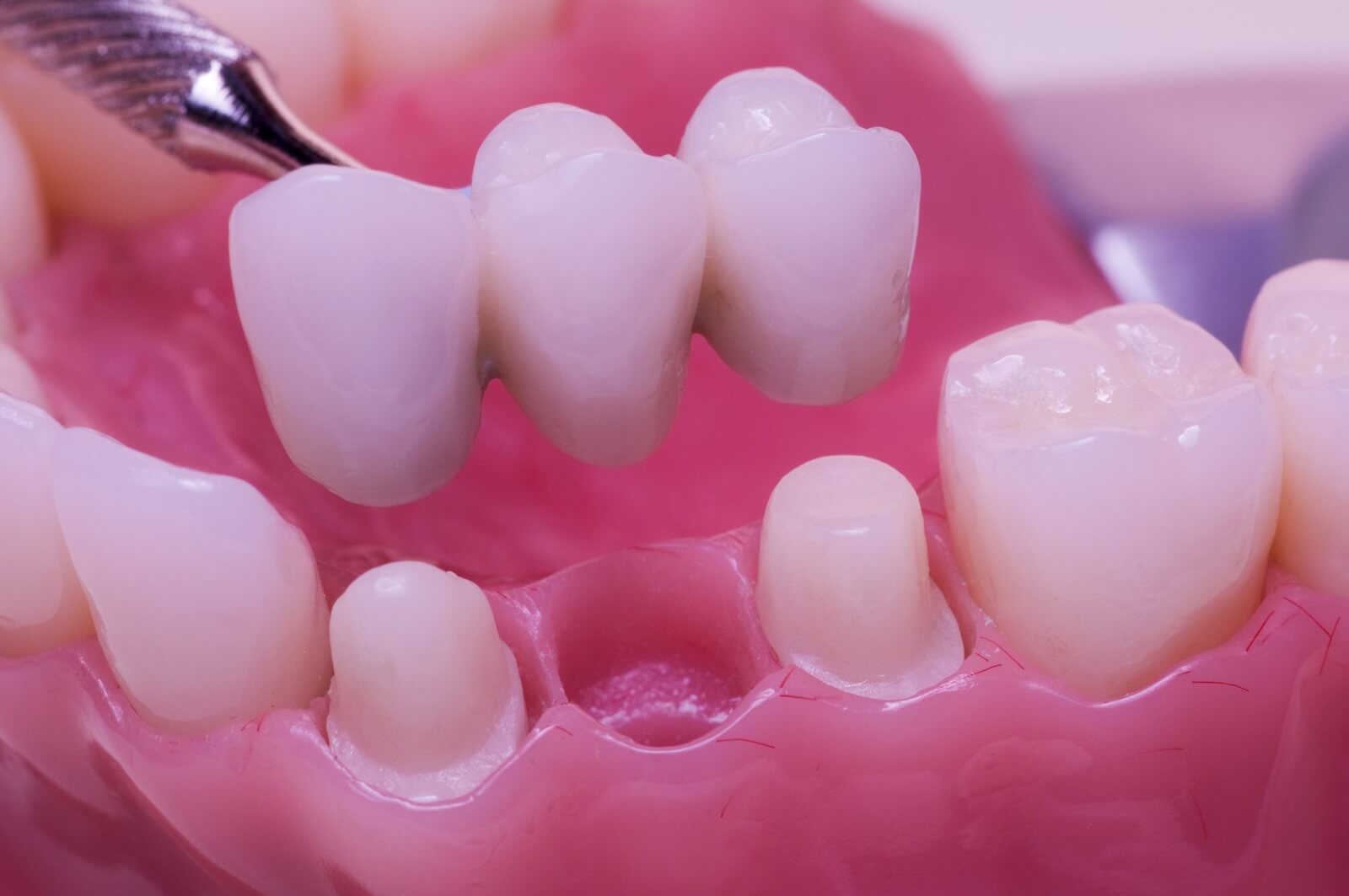A complete dentition plays a vital role in maintaining optimal oral health. Each tooth contributes to proper chewing function, speech articulation, and a balanced bite. Missing teeth disrupt this delicate harmony. They can impact your ability to eat and speak effectively and lead to a misaligned bite, jaw problems, and even a sunken facial appearance.
Fortunately, modern dentistry offers solutions to address missing teeth. One of the most common and successful options is a dental bridge. As the name indicates, a dental bridge bridges gaps created by one or more missing teeth. It’s a fixed restoration offering numerous aesthetic and functional benefits, restoring your smile and improving your oral health.
This article explores into dental bridges, providing valuable insights from dental professionals. We’ll discuss the components of a bridge, the treatment process from consultation to completion, and the key advantages bridges offer. Let’s go!
Understanding the Anatomy of a Dental Bridge
A dental bridge combines aesthetics and functionality to improve both smiles and oral health. To fully appreciate its effectiveness, let’s break down the key components that make it work.
The components of a dental bridge include:
- Abutment Teeth: These are the natural teeth surrounding the gap created by a missing tooth (or teeth). The dentist prepares these teeth by slightly reducing their enamel surface to create a strong foundation. Crowns, custom-made caps that resemble natural teeth, are then cemented onto these prepared abutment teeth. These crowns act as anchors, holding the entire bridge structure in place.
- Pontic(s): These are the artificial teeth that fill the space left by the missing tooth/teeth. They are typically made from durable materials like porcelain or zirconia and mimic natural teeth’ color and translucency for a seamless look. In some cases, dentists may use metal alloys for the inner framework of the pontic for added strength.
- Material Options: The choice of material for both crowns and pontics depends on various factors, such as the location of the bridge, desired aesthetics, and bite force. Porcelain fused to metal (PFM) crowns are popular because they balance strength and aesthetics. Zirconia crowns are another excellent option, known for their durability and natural-looking appearance.
There are two main types of dental bridges to consider:
- Fixed Bridges: These are the most common type and are cemented onto the abutment teeth. They offer excellent stability and require minimal maintenance.
- Removable Bridges: These bridges utilize metal wings bonded to the backs of the abutment teeth instead of crowns. While less common than fixed bridges, they are suitable for certain situations, particularly when the abutment teeth are not strong enough for traditional crowns.
The Bridgework Process: From Consultation to Completion
A thorough examination forms the cornerstone of successful bridgework. The dentist will meticulously examine your mouth, paying close attention to the missing tooth area and the surrounding teeth. X-rays are crucial at this stage, providing a clear picture of your jawbone health and the root structure of the abutment teeth. This comprehensive evaluation allows the dentist to discuss your treatment goals, concerns, and medical history in detail. It’s also a perfect opportunity for the dentist to explain the bridgework option thoroughly, outlining its advantages, limitations, and suitability for your specific situation.
Once you and the dentist decide to proceed with a dental bridge, meticulous treatment planning takes center stage. This planning phase considers several critical factors, including the number and location of missing teeth, your bite pattern, jaw health, and your desired aesthetics. Your dentist will take detailed impressions of your teeth to create a model of your mouth that the dental lab will use to make the custom bridge. They will also determine the most suitable material for the crowns and pontics based on the bridge’s location and functional role in your mouth.
The next step is preparing the abutment teeth to form a solid foundation for the bridge. This preparation involves carefully removing a small amount of enamel and dentin from each abutment tooth. Local anesthesia is used throughout this process to ensure patient comfort. The amount of tooth reduction is minimal and ensures a proper fit for the crowns without compromising the structural integrity of the teeth.
With the abutment teeth prepared, the dentist will place temporary crowns. These temporary crowns, typically made from acrylic, serve two purposes: protecting the exposed teeth and maintaining aesthetics while the permanent bridge is being crafted in the dental laboratory. It’s important to treat these temporary crowns with care until the permanent bridge is ready for placement.
Finally, the day arrives for the permanent bridge to be placed. When the bridge arrives from the lab, the dentist will check its fit, color, and overall aesthetics. After ensuring everything meets your expectations, the dentist will carefully cement the bridge onto the prepared abutment teeth. This procedure is relatively painless and may involve minor adjustments for optimal comfort and bite function.
Benefits of Dental Bridges for Patients
A well-designed and placed dental bridge offers many advantages for patients seeking solutions for missing teeth.
Benefits of dental ridges include:
- Enhanced Aesthetics and Confidence: Missing teeth can significantly impact your smile’s appearance, potentially leading to feelings of self-consciousness. Dental bridges are natural-looking replacements, effectively filling the gaps and restoring a complete and aesthetically pleasing smile.
- Improved Chewing Ability: Missing teeth can make chewing a challenging and frustrating experience. The food might feel unevenly distributed in your mouth, and certain foods might become difficult to manage. Dental bridges restore chewing function by providing a stable surface for biting and grinding food.
- Clearer Speech: Missing teeth, particularly in the front of the mouth, can affect your speech clarity. Sounds like “s,” “f,” and “th” might become slurred or difficult to pronounce. Dental bridges bridge the gap (pun intended) and restore proper tongue placement, leading to clearer and more articulate speech.
- Prevents Shifting of Teeth: When a tooth (or teeth) is missing, the surrounding teeth tend to shift into the space to fill the gap. This shifting can lead to misalignment, crowding, and bite problems. Dental bridges prevent this unwanted movement by maintaining the space occupied by the missing tooth and keeping the remaining teeth in their proper positions.
- Maintains Facial Structure: Missing teeth, especially in the back of the mouth, can contribute to a sunken facial appearance. Dental bridges help maintain a natural facial structure by supporting the surrounding tissues and preventing them from collapsing inward.
- Contributes to Overall Oral Health: By preventing teeth from shifting and maintaining proper bite alignment, dental bridges contribute to better overall oral health. They also make it easier to maintain proper oral hygiene by allowing for easier cleaning in the areas previously occupied by the missing tooth.
Conclusion
Dental bridges play a vital role in restorative dentistry, offering an effective solution for patients with missing teeth. They not only restore aesthetics and confidence in your smile but also improve chewing function, speech clarity, and overall oral health. From initial consultation to final placement, the bridgework process is meticulous and ensures a comfortable and functional restoration.

